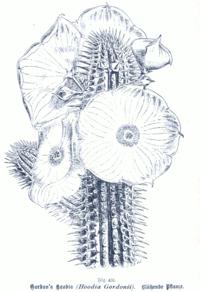
Hoodia gordonii, "Whoo De AH", is the botanical name for a leafless, spiky succulent plant that grows throughout the semi-arid areas of Southern Africa primarily the Kalahari desert. The San (local inhabitants) have rationally used Hoodia stems to stave off hunger and thirst when on long journeys, as it acts as an appetite suppressant. Hoodia is a Succulent botanical and is part of the Genus: Trichocaulon and belongs to the Family Name: Asclepiadaceae. There are approximately twenty plants within the Hoodia genus family, however, Hoodia Gordonii is the unique plant that South African San bushmen have used for generations to endure long hunting expeditions. Independent tests conducted in Leicester, England on obese individuals from all walks of life have proved that over a 15-day period, food intake was reduced by 1000 calories a day. Your body creates the illusion of hunger even when you're not really needing calories. And your body, like mine, doesn't know when to turn it off. The hunger signal is only turned off when your hypothalamus thinks you've eaten enough food. Your hypothalamus -- part of your body's endocrine system -- decides this by sensing the rise of sugar (glucose) in your blood. Eat enough carbohydrates, and your blood sugar rises, which convinces your hypothalamus to tell your brain that you're no longer hungry. There are no known adverse side effects as a result of taking Hoodia in conjunction with prescription medications and other herbal supplements. However, if you are presently using any prescription medication and are under the care of a physician, you should always consult your physician before taking any supplement medication.
more
|